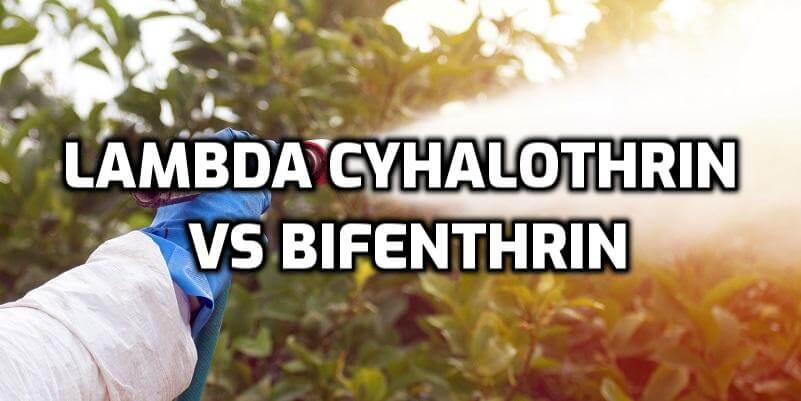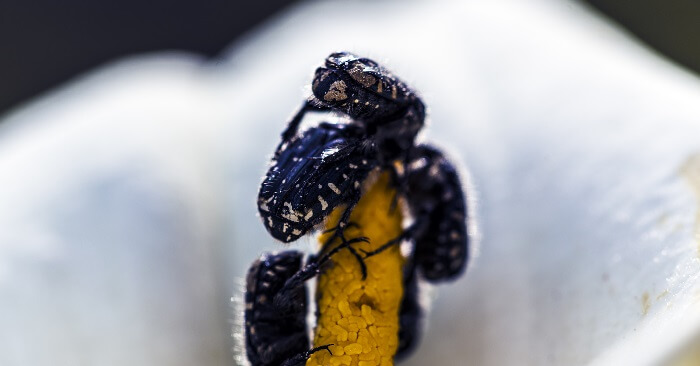Lambda Cyhalothrin Vs Bifenthrin

In the world of pest control, various insecticides are employed to protect crops and structures from insect infestations. Two of the most commonly used synthetic pyrethroids are Lambda-Cyhalothrin and Bifenthrin. While both are known to be effective, their attributes differ in several ways. This article dives into a comparative analysis between the two.
Lambda Cyhalothrin Vs Bifenthrin Table
This comparison table will help you understand the differences between Lambda-Cyhalothrin and Bifenthrin insecticides.
| Feature | Lambda-Cyhalothrin | Bifenthrin |
|---|---|---|
| Chemical Formula | C23H19ClF3NO3 | C23H22ClF3O2 |
| Appearance | Crystalline substance | White waxy solid |
| Mode of Action | Sodium channel activator | Sodium channel activator |
| Target Pests | Aphids, whiteflies, beetles | Termites, ants, ticks |
| Residual Effects | Long-lasting | Very long-lasting in soil |
| Safety Concerns | Skin irritation, dizziness | Skin irritation, dizziness |
| Cost-effectiveness | Generally cost-effective | Potentially more cost-effective for long-term control |
| Advantages | Broad-spectrum, versatile | Extended residual activity |
| Limitations | UV sensitivity | Environmental persistence |
Chemical Profile
Lambda-cyhalothrin and bifenthrin are both synthetic pyrethroids derived from naturally occurring pyrethrins found in chrysanthemum flowers. Lambda-cyhalothrin is a crystalline substance with the chemical formula C23H19ClF3NO3.
On the other hand, bifenthrin has a chemical formula of C23H22ClF3O2 and appears as a white waxy solid. Both chemicals are highly hydrophobic, making them less soluble in water.
Mode of Action
Pyrethroids, including lambda-cyhalothrin and bifenthrin, target the nervous systems of pests. They prolong the sodium channel activation, which leads to paralysis and eventually death in insects.
While their mode of action is similar, slight variations in their chemical structures can lead to differences in the efficacy and spectrum of pests they control.
Target Pests
Lambda-cyhalothrin is effective against many pests, including aphids, whiteflies, beetles, and various moth species. Bifenthrin, while also broad-spectrum, is particularly effective against termites, ants, and certain species of tough-to-control pests like ticks and chinch bugs. Both insecticides are widely used in agriculture, home pest control, and public health applications.

Residual Effects
Both lambda-cyhalothrin and bifenthrin have strong residual effects, meaning they remain effective for a prolonged period after application. Bifenthrin, however, is often noted for its exceptionally long residual activity, especially in the soil where it can remain active for several months. Lambda-cyhalothrin also has a substantial residual effect, but the duration might be somewhat less compared to bifenthrin in certain conditions.
Safety Concern
As with all pyrethroids, there are safety concerns associated with the use of both lambda-cyhalothrin and bifenthrin. Both chemicals can be harmful if ingested, inhaled, or absorbed through the skin.
They can cause symptoms like skin irritation, dizziness, or even more severe health issues if exposed in large amounts. Using them as directed and taking necessary precautions during application is crucial.
Cost-effectiveness
Both insecticides offer cost-effective solutions for pest management when considering the long residual effects and the broad spectrum of pests they control. However, the specific cost can vary depending on the region, brand, and formulation.
Generally speaking, bifenthrin might be more cost-effective for long-term pest control, especially in soil applications, due to its extended residual activity.
Advantages
Lambda-cyhalothrin’s advantages include its broad-spectrum pest control and significant residual effect. It’s also versatile, being useful in both agricultural and residential settings. Bifenthrin’s primary advantage is its extended residual activity, particularly in soil, making it an excellent choice for controlling subterranean pests like termites.
Limitations
Lambda-cyhalothrin can be more sensitive to UV degradation compared to some other pyrethroids. Bifenthrin, while having extended residual activity, can be potentially more persistent in the environment, leading to concerns about its environmental impact, especially in aquatic ecosystems.
Our Observation
Both lambda-cyhalothrin and bifenthrin are potent pyrethroids with broad-spectrum pest control capabilities. The choice between them often comes down to specific needs.
Lambda-cyhalothrin might be preferred for general pest control with a considerable residual effect, while bifenthrin stands out for its long-lasting activity in the soil. As always, it’s essential to consider the safety and environmental impacts and follow recommended application guidelines.

James E. Butkovich, Pest control maven with a knack for eco-friendly & Chemical solutions. Blogger with a mission to make homes pest-free, one post at a time.